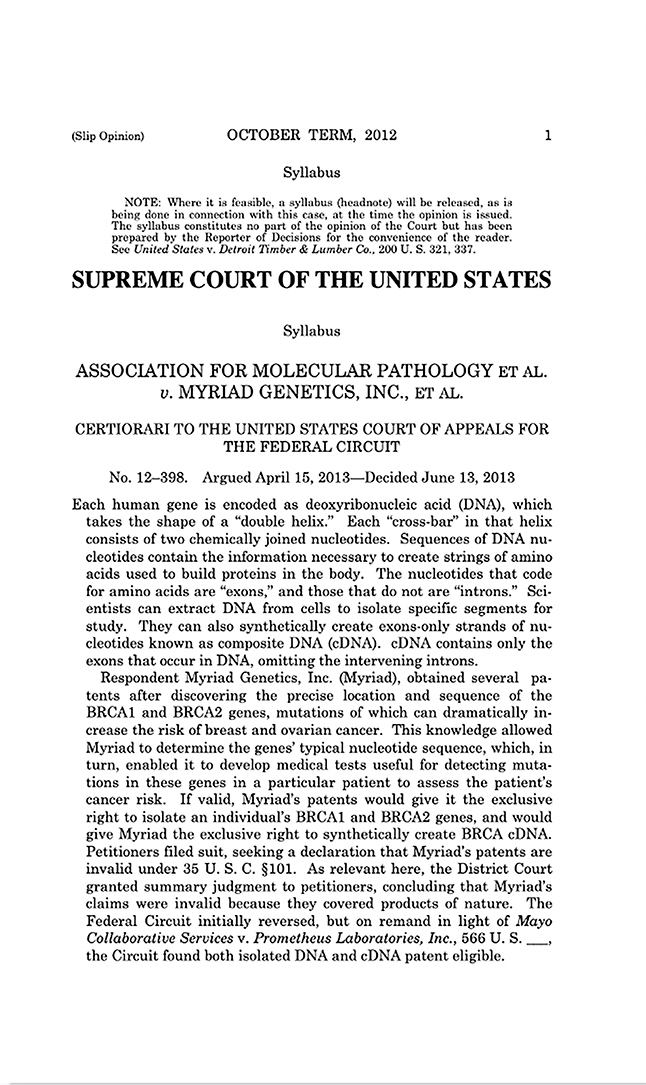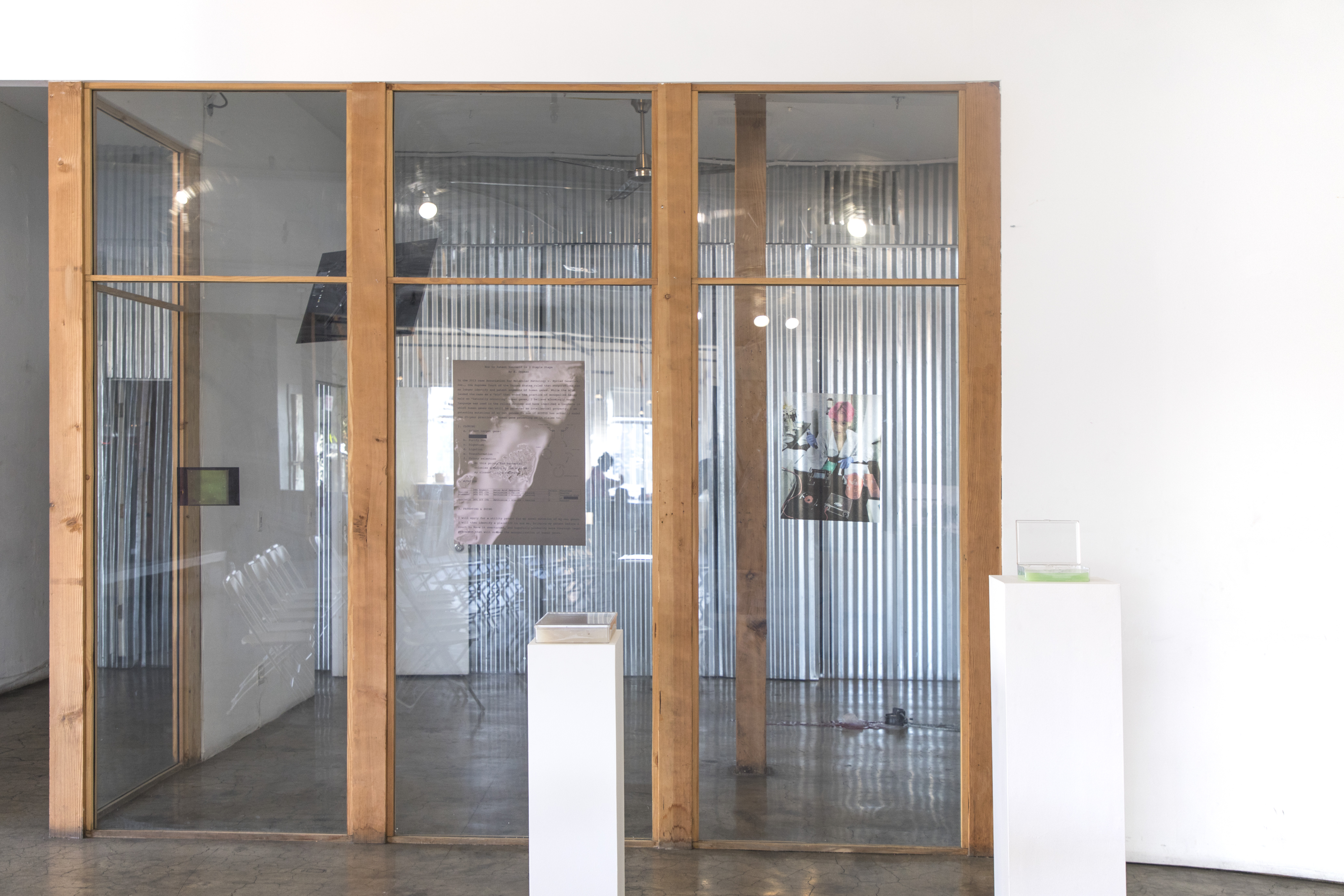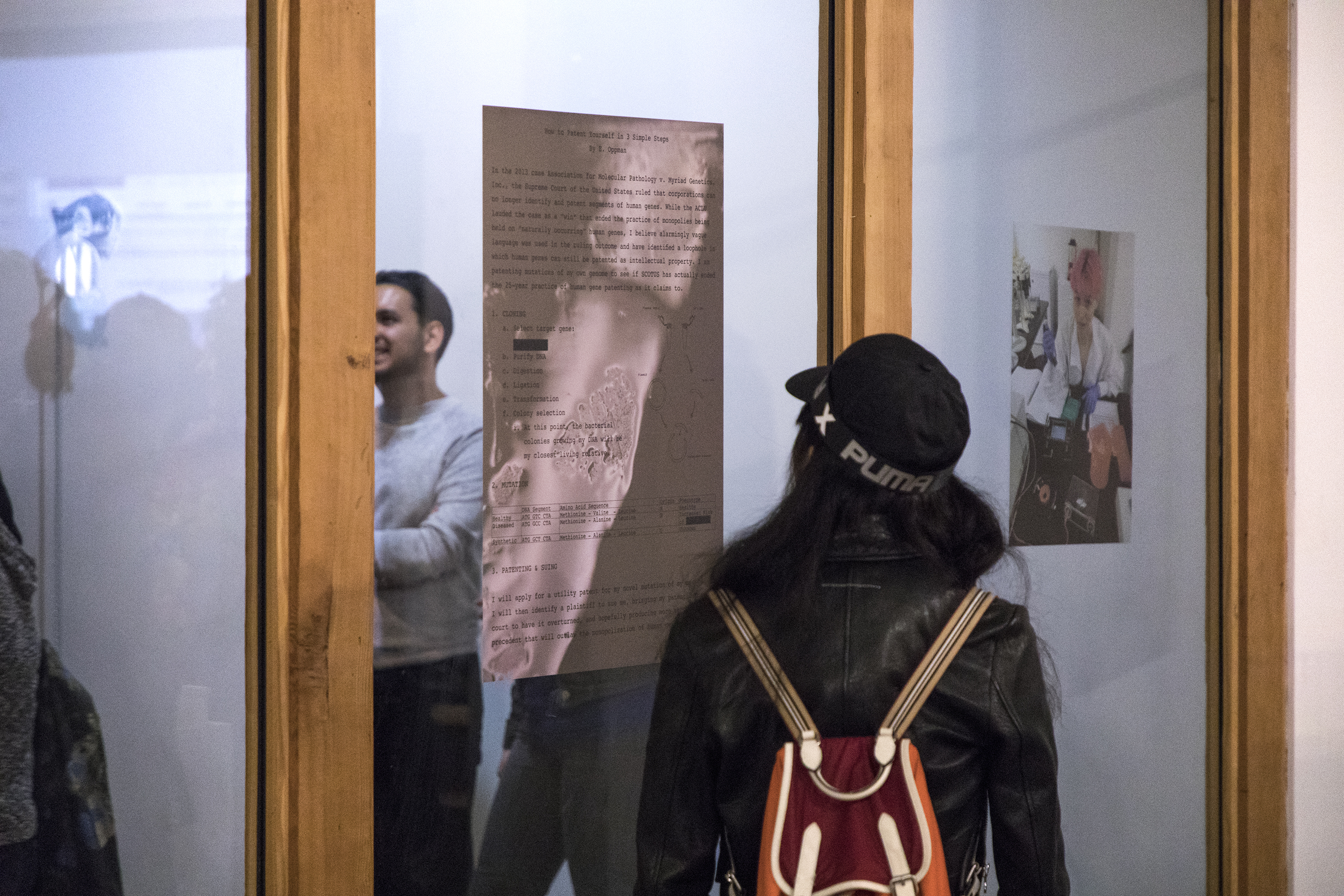HUMAN GENETIC PATENT RESEARCH
![]()


My NDA created to distribute to those I disclose elements of my project to, for protecting the “novelty” of my patented genetic sequence ( R )
How to Patent Yourself in 3 Simple Steps
2017 - ON GOING
I am patenting mutations of my own genome to see whether the 2013 Supreme Court case Association for Molecular Pathology v. Myriad Genetics, Inc. actually ended the 25-year practice of gene patenting—that is, for-profit labs identifying and claiming human genes as intellectual property in order to profit from any medicines or treatment derived from studying those genes. While the ACLU lauded the case as a “win” that ended the monopolistic practice, I believe alarmingly vague language was used in the ruling outcome and have identified a loophole in which human genes can still be patented as intellectual property.
Through this process, I am seeking to find out if I have any more control over my own genome (and its coding functions) than massive corporations do. Following lab protocols including molecular cloning and using plasmid vectors while collaborating with patent attorneys, this project is a conceptual exploration of the American patent system, as I navigate legal systems and distribute NDAs. I am patenting my genes to inform the public on bioprospecting, and to prove that if I am able to get away with it, corporations undoubtedly still can.
Through this process, I am seeking to find out if I have any more control over my own genome (and its coding functions) than massive corporations do. Following lab protocols including molecular cloning and using plasmid vectors while collaborating with patent attorneys, this project is a conceptual exploration of the American patent system, as I navigate legal systems and distribute NDAs. I am patenting my genes to inform the public on bioprospecting, and to prove that if I am able to get away with it, corporations undoubtedly still can.


Installation view at NAVEL Gallery in Los Angeles

How To Patent Yourself in 3 Simple Steps
24’’ x 12’’
Digital print on adhesive canvas

SAIC’s Bio Art Lab Is Redefining The Meaning Of Life
Chicago Reader: Inside SAIC’s Bio Art Lab, Where Art is Life-- Literally
